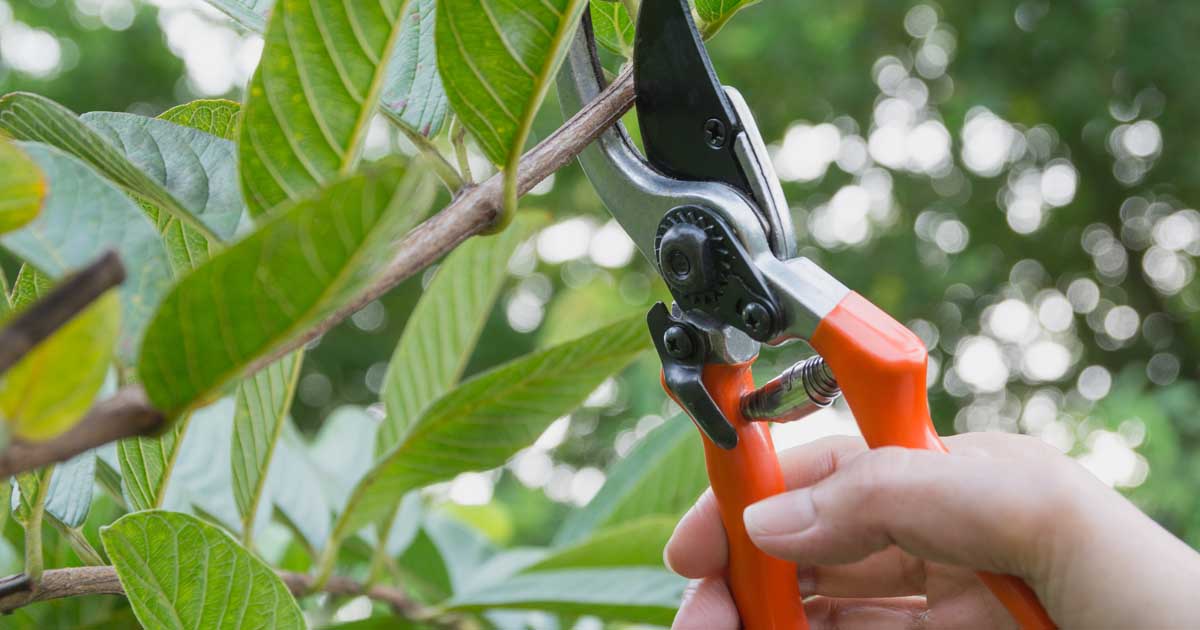Pruning, often likened to an art form, is a crucial skill for any avid gardener. This handbook will guide you through mastering the delicate balance of shaping and nurturing your plants. Whether you’re a seasoned horticulturist or a green thumb enthusiast, understanding the nuances of pruning is key to a thriving garden.
Understanding Pruning Basics
What is Pruning?
Pruning is not just about trimming branches; it’s a strategic approach to enhance the overall health and appearance of your plants. By removing dead or overgrown parts, you allow for better air circulation, sunlight penetration, and promote vigorous growth.
Benefits of Regular Pruning
Regular pruning offers a myriad of benefits, from controlling the size and shape of plants to preventing diseases. It’s a proactive measure that fosters healthier plants and more abundant blooms.
Types of Pruning
Formative Pruning
Formative pruning focuses on shaping young plants, directing their growth for a well-balanced structure. This is crucial for the long-term health and aesthetics of the plant.
Maintenance Pruning
Maintenance pruning involves routine trimming to keep plants in their desired shape and size. It’s an ongoing process that prevents overgrowth and maintains the overall look of your garden.
Restorative Pruning
Restorative pruning is a more drastic measure, addressing neglected or damaged plants. It involves significant removal of branches to rejuvenate the plant and stimulate new growth.
Essential Tools for Pruning
Pruning Shears
Pruning shears are essential for precision cutting of small branches and stems. Regular maintenance, such as cleaning and sharpening, ensures optimal performance.
Loppers
Loppers are designed for thicker branches that pruning shears can’t handle. Choosing the right size and using them correctly is vital for efficient and clean cuts.
Pruning Saws
Pruning saws are ideal for larger branches. Proper technique and safety measures must be observed when using these powerful tools.
Choosing the Right Plants for Pruning
Not all plants benefit from pruning. Learn the criteria for selecting plants that respond well to pruning, and discover examples of species that flourish with regular trimming.
Seasonal Pruning Guide
Spring Pruning Tips
Spring is a crucial time for pruning, promoting new growth and setting the stage for a vibrant summer garden. Learn the specific techniques for different plants during this season.
Summer Pruning Guidelines
Summer pruning focuses on maintaining shape and controlling unruly growth. Discover the dos and don’ts for a thriving mid-year garden.
Fall and Winter Pruning Considerations
Fall and winter pruning are essential for plant dormancy and preparing for the next growing season. Understand the unique needs of your garden during these colder months.
Common Pruning Mistakes to Avoid
Over-Pruning
Over-pruning can weaken plants and stunt their growth. Learn how to strike the right balance and avoid excessive trimming.
Improper Tool Usage
Using the wrong tools can damage plants and hinder their development. Familiarize yourself with the correct tools for each pruning task.
Neglecting Timing
Pruning at the wrong time can lead to stress and disease susceptibility. Follow a proper schedule based on plant types for optimal results.
Promoting Plant Health Through Pruning
Encouraging Air Circulation
Pruning helps improve air circulation, reducing the risk of fungal diseases. Discover how strategic cuts can enhance the overall health of your garden.
Disease Prevention Strategies
Learn how proper pruning techniques can contribute to disease prevention, creating a robust and resilient garden environment.
Pruning for Aesthetics
Shaping Plants for Visual Appeal
Explore the artistic side of pruning by shaping plants to create visual interest in your garden. From geometric designs to natural forms, the possibilities are endless.
Creating Focal Points in the Garden
Use pruning to highlight key features in your garden, creating focal points that draw the eye and add depth to your outdoor space.
Dealing with Overgrown Plants
Strategies for Tackling Excessively Grown Plants
When plants become overgrown, it’s essential to have a plan. Learn effective strategies for bringing your garden back into balance.
Gradual Versus Radical Pruning Approaches
Decide whether a gradual or radical pruning approach is suitable for your specific situation. Both methods have their merits, and understanding when to use each is key.
Pruning Challenges and Solutions
Handling Disease-Infested Plants
When faced with disease-infested plants, specific pruning strategies can help contain the issue and promote recovery.
Addressing Uneven Growth
Uneven growth can detract from the overall beauty of your garden. Discover techniques to address uneven growth and create a harmonious landscape.
DIY Pruning Projects
Creating Topiaries
Transform your garden with DIY topiaries. Learn the art of shaping shrubs into whimsical or sophisticated designs, adding a touch of elegance to your outdoor space.
Building a Flowering Archway
Enhance your garden’s entrance with a flowering archway. This step-by-step guide will help you create a stunning and inviting focal point.
Pruning and Sustainability
Sustainable Gardening Practices
Pruning can align with sustainable gardening practices, promoting a healthier ecosystem and reducing environmental impact.
How Pruning Contributes to a Greener Environment
Explore the eco-friendly aspects of pruning and its role in creating a green and sustainable garden space.
Success Stories: Before and After Pruning
Real-Life Examples Showcasing the Transformation
Witness the dramatic transformations that can occur with strategic pruning. From struggling plants to thriving garden showcases, these success stories inspire and motivate.
Gardener Testimonials
Hear from fellow gardeners who have experienced the positive impact of mastering the art of pruning. Their insights and tips add a personal touch to your pruning journey.
Conclusion
In conclusion, mastering the art of pruning is a rewarding journey for any gardener. By understanding the basics, employing the right tools, and embracing the various pruning techniques, you’ll unlock the full potential of your garden. Remember, each cut is a step toward a healthier, more vibrant outdoor space.
Frequently Asked Questions
- Is pruning necessary for all plants?
- Pruning is beneficial for many plants, but not all require regular trimming. It depends on the species and their growth habits.
- Can I prune my plants at any time of the year?
- No, the timing of pruning varies by plant type. Spring is a common time, but some plants benefit from pruning in other seasons.
- What should I do if I accidentally over-prune a plant?
- If you’ve over-pruned, monitor the plant closely and ensure it receives proper care to recover. Avoid further stress on the plant.
- Are there plants that should never be pruned?
- Some plants, especially those with a natural and wild appearance, are best left unpruned. Research specific species before attempting to trim them.
- How do I deal with diseases in my pruned plants?
- Proper sanitation and disease prevention during pruning can minimize the risk. If a plant is diseased, follow recommended treatments and monitor its progress.



